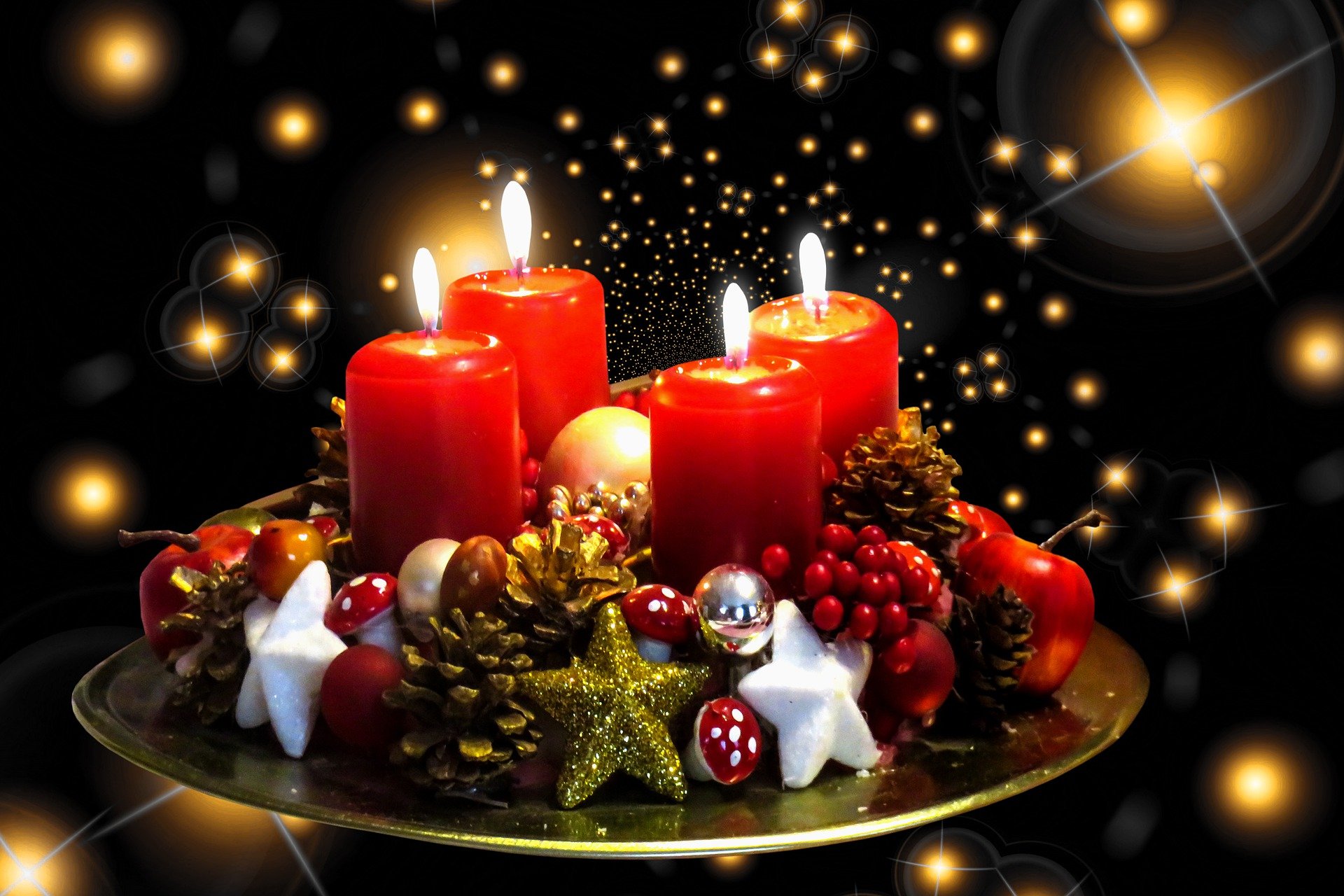Advent is a special time for many families. Contemplative mood, anticipation of Christmas, the smell of cookies and festive music characterize the time. But the Advent wreath is also an important pre-Christmas custom. Traditionally, many people weave it from fir branches and decorate it with four candles. On each Sunday in Advent, one more is lit. The Christmas wreath represents the remaining days until Christmas Eve and symbolizes the solemnity of this special time.
The history of the Advent wreath
The Wichern Advent wreath – or: how it all began…
But where does this wreath come from? Probably the first Christmas wreath was introduced in 1839 by the Evangelical Lutheran theologian and educator Johann Heinrich Wichern. He took care of some children from poor backgrounds in 1833 and moved with them into an old farmhouse, the “Rauhe Haus” in Hamburg.
Like almost all children, they couldn’t wait for Christmas to finally arrive. So in 1839, Wichern converted an old wagon wheel and a wooden wreath and put 20 small red and four large white candles on them. During the daily devotions, the children were allowed to light a red candle, and on Sundays in Advent, an additional white candle. This made the days until Christmas Eve more tangible. To this day, this large version still hangs in the church room of Hamburg’s St. Michael’s Church during Advent and Christmas, and also continues to hang in the “Rauhes Haus”.
The development of the Advent wreath with four candles
It was not until almost a hundred years after Wichern invented this wreath, which is sometimes credited as the origin of the Advent calendar, that the first Advent wreaths were also found in Catholic areas. Over time, the traditional WicherWeihnachtskränzsche – Advent wreath developed into a bouquet with four candles. It was added as early as 1860 that the Advent arrangement is made with fir greenery. For a long time it was found mainly in Evangelical Lutheran families and parishes. It was not until 1925 that an Advent wreath was hung for the first time in a Catholic church in Cologne. Munich followed in 1930.
The Advent wreath becomes a wreath of lights
During National Socialism, Christian symbolism disappeared from public spaces. Thus, the Advent wreath was replaced by the “Sonnenwendkranz” or the “Lichterkranz”. Under the new name “Wünschelichter” (wishing lights), the candles were now supposed to symbolize the four seasons, and the ornaments mostly consisted of sun wheel and Viking motifs. To light the “Wishing Lights” on the Sundays of Advent, children recited so-called light sayings. These were in corresponding Christmas books or in the Advent calendar replacement “Pre-Christmas”.
After the end of the Second World War, however, people wanted to return to Christian traditions. Thus, the Advent wreath with its four pillar candles and beautiful Christmas decorations made a comeback and today shines as bright and warming as it has since its origin.
The meaning of the Christmas wreath
The symbolism of the Advent wreath can not be clearly explained. Originally, the increase of light is a symbol of the rising expectation of the birth of Jesus Christ. He is called the “light of the world” in the Christian faith. In the course of time, other interpretations followed. They refer to the circular shape, the meaning of the wreath, the colors used for the candles or the bows, as well as the use of fir greenery. Thus, the Advent wreath is also often interpreted in relation to the circle of the earth and the four cardinal points. The circular shape often symbolizes the eternity of life, which Jesus Christ showed with his resurrection. Green is the color of hope and life. The candles represent the increasing light that illuminates the world during the Christmas season.
The Advent wreath is still an integral part of the pre-Christmas season. Meanwhile, in addition to the traditional arrangements, there are also door wreaths, plates with Christmas decorations and various types of candles. But they are all united by one idea: their light stands for love, joy and festivity.
— hector pascua/picture:pixabay.com
This post has already been read 1689 times!



